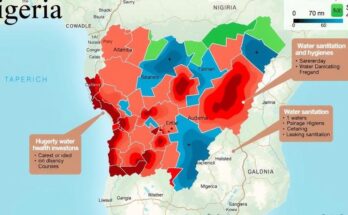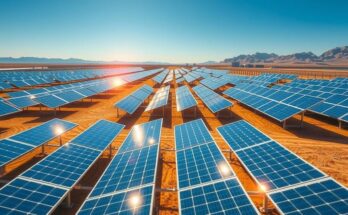A report by the OECD indicates that the Paris region could face up to €2.5 billion in economic damages from severe droughts predicted by the end of the century. With increasing temperatures and erratic rainfall patterns, severe drought conditions may disrupt agricultural and manufacturing sectors. The report urges for immediate preventive measures and reevaluation of water allocation strategies to mitigate future risks and ensure regional resilience.
The Organisation for Economic Cooperation and Development (OECD) has published a report indicating that the Paris region could incur economic damages up to €2.5 billion due to severe drought episodes by the end of the century. Although the area has not yet faced critical water shortages seen in cities such as Barcelona and Cape Town, future climate projections forecast worsening conditions, particularly beyond 2050, which could significantly impact economic activities, especially in agriculture and manufacturing sectors.
The Île-de-France region, historically characterized as water-rich due to its reservoirs and groundwater resources, has already recorded a 2°C temperature increase since 1990. This warming trend heightens the risk of severe droughts, as climate change results in erratic rainfall patterns and increasingly dry soils. The report anticipates that within 25 years, drought conditions will resemble those seen in Mediterranean areas at the close of the 20th century, leading to substantial agricultural losses.
The region supports 19 percent of France’s population and contributes one-third of the country’s economy, with agriculture occupying half its land. Consequently, water demands have surged, with agricultural requirements having more than doubled since 2012 and projected to increase by 45 percent by 2050. Currently, public water supply accounts for 57 percent of water withdrawals, while industry, energy production, canals, and irrigation follow at 20, 13, 7, and 3 percent respectively.
Should a severe drought similar to the catastrophic 1921 event occur, water usage restrictions would be imposed for over 150 days on industries, agriculture, and river transport to secure adequate drinking water for residents. The report indicates that immediate economic losses will significantly contribute to the overall costs, predominantly affecting manufacturing and farming sectors, which would face over two-thirds of the potential losses.
To mitigate the risk of drought, the report asserts that a thorough understanding of water usage, including seasonal variances, is essential. Several preventive strategies are recommended, despite the Île-de-France performing reasonably well in current water conservation. The OECD emphasizes the necessity for a risk assessment framework post-2030 to effectively allocate water resources and redesign regulations that constrain unlimited withdrawals during non-crisis periods.
Infrastructure related to water management also poses challenges, with the report highlighting the potential for structural damage to buildings as clay soils shrink due to drought. The OECD’s recommendations advocate for innovative solutions, including rainwater capturing and recycling industrial wastewater. However, the report points out the unresolved issue of funding these projects, warning that without adequate investments now, the future resilience of Paris and its vicinity may be compromised.
In conclusion, the OECD report highlights the impending economic threat posed by climate change-related droughts in the Paris region, projecting potential damages of €2.5 billion. As agricultural needs surge and water usage becomes more critical, the necessity for strategic planning and investment in water management infrastructure is paramount. Without immediate action, the health of both the economy and the environment in Île-de-France may face significant challenges in the future.
Original Source: www.rfi.fr




